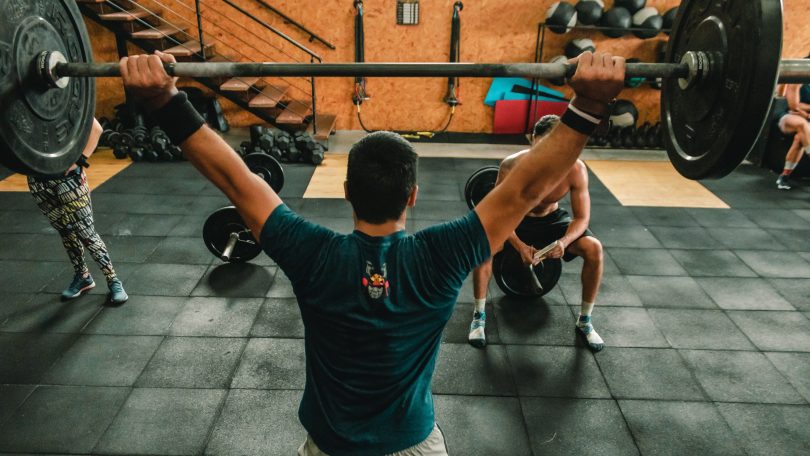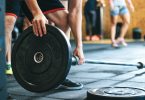Introduction:
Welcome to our comprehensive guide on harnessing the benefits of anaerobic exercise for achieving peak performance and optimal fitness. Anaerobic exercises, characterized by short bursts of intense activity, have proven to be highly effective in building strength, power, and endurance. In this article “Achieve Peak Performance: Harnessing the Benefits of Anaerobic Exercise for Optimal Fitness”, we will explore the key benefits of anaerobic exercise and provide practical tips to help you incorporate it into your fitness routine.
-
Understand Anaerobic Exercise:
- Define anaerobic exercise: Anaerobic exercise refers to high-intensity physical activities that require energy production without the presence of oxygen.
- Differentiate between aerobic and anaerobic exercise: While aerobic exercise focuses on endurance and cardiovascular health, anaerobic exercise emphasizes strength, power, and muscle growth.
-
Benefits of Anaerobic Exercise:
- Increased muscle strength: Anaerobic exercise stimulates muscle fibers to grow and adapt, resulting in increased strength and power.
- Enhanced cardiovascular fitness: While anaerobic exercise primarily targets muscles, it also improves cardiovascular health by increasing heart rate and improving oxygen uptake efficiency.
- Efficient fat burning: Intense anaerobic workouts create an “afterburn effect” known as excess post-exercise oxygen consumption (EPOC), leading to continued calorie burn even after the workout.
- Improved bone density: The high impact and resistance involved in anaerobic exercises promote bone density and help prevent osteoporosis.
- Boosted metabolism: Regular anaerobic exercise increases metabolic rate, enabling the body to burn calories more efficiently.
-
Incorporating Anaerobic Exercise into Your Fitness Routine:
- Consult a professional: Before starting any new exercise program, it is crucial to consult with a fitness professional or healthcare provider to ensure safety and appropriate intensity.
- Choose suitable exercises: Anaerobic exercises include weightlifting, sprinting, HIIT (High-Intensity Interval Training), plyometrics, and circuit training. Select exercises that align with your goals and preferences.
- Gradually increase intensity: Start with moderate intensity and gradually increase the challenge to avoid injury and allow your body to adapt.
- Design a balanced program: Include both aerobic and anaerobic exercises in your routine to reap the benefits of both types of workouts.
- Focus on proper form: Correct technique and form are essential to prevent injury and maximize the effectiveness of your anaerobic exercises. Seek guidance from a trainer or coach if needed.
- Allow sufficient recovery: Adequate rest and recovery periods are crucial for muscle growth and injury prevention. Avoid overtraining by incorporating rest days into your schedule.
-
Nutrition and Hydration:
- Fuel your workouts: Consume a balanced diet with adequate carbohydrates, protein, and healthy fats to provide energy for intense anaerobic exercise.
- Stay hydrated: Proper hydration is essential for optimal performance and recovery. Drink water before, during, and after your workouts.
-
Tracking Progress and Setting Goals:
- Keep a workout journal: Track your exercises, sets, repetitions, and weights to monitor progress and identify areas for improvement.
- Set specific and measurable goals: Establish clear goals related to strength, power, endurance, or specific exercises. Regularly reassess and adjust your goals as you progress.
-
Safety Precautions:
- Warm-up and cool-down: Prior to engaging in anaerobic exercise, warm up with dynamic stretching and light aerobic activity to prepare your muscles and joints. Afterward, cool down with static stretches to promote flexibility and prevent muscle soreness.
- Use proper equipment: When performing anaerobic exercises such as weightlifting, ensure you have the appropriate equipment, such as supportive footwear and protective gear, to minimize the risk of injuries.
- Listen to your body: Pay attention to any signs of pain, discomfort, or excessive fatigue during your workouts. If something doesn’t feel right, take a break or seek medical advice to prevent further injury.

Photo by Andrea Piacquadio: https://www.pexels.com/photo/women-doing-yoga-class-on-pink-yoga-mat-3775593/
-
Progressive Overload:
- Implement progressive overload: To continue making progress, gradually increase the intensity, duration, or resistance of your anaerobic exercises over time. This progressive overload principle challenges your muscles and promotes growth and improvement.
- Vary your workouts: Incorporate different exercises, techniques, and training methods to keep your workouts engaging and prevent plateaus.
-
Recovery Strategies:
- Sleep quality: Adequate sleep is crucial for muscle recovery and overall performance. Aim for 7-9 hours of quality sleep each night.
- Active recovery: On rest days, engage in light activities such as walking or gentle stretching to promote blood circulation and aid in muscle recovery.
- Foam rolling and stretching: Use foam rollers and perform static stretches to alleviate muscle tension, reduce soreness, and enhance flexibility.
-
Training with a Partner or Coach:
- Accountability and motivation: Working out with a partner or under the guidance of a coach can provide support, encouragement, and accountability, increasing your commitment and motivation to achieve your fitness goals.
- Technique improvement: A knowledgeable partner or coach can help ensure proper form, technique, and spotting during exercises, reducing the risk of injuries and maximizing the effectiveness of your workouts.
-
Monitoring and Adjusting Your Routine:
- Regular assessments: Periodically evaluate your progress and make adjustments to your anaerobic exercise routine as needed. This can involve modifying exercises, increasing weights or repetitions, or introducing new training methods.
- Seek professional guidance: If you’re unsure about your progress or want to optimize your training further, consider consulting with a fitness professional or personal trainer who can provide personalized guidance and advice.
-
Psychological Benefits:
- Stress reduction: Anaerobic exercise, with its intense nature, can serve as a powerful stress reliever. The release of endorphins during exercise promotes a positive mood and helps reduce anxiety and stress levels.
- Increased confidence: Achieving new milestones, improving strength, and witnessing physical progress through anaerobic exercise can boost self-esteem and confidence in various areas of life.
- Mental resilience: The discipline and determination required for anaerobic exercise can transfer to other aspects of life, enhancing mental resilience and the ability to overcome challenges.
-
Cross-Training:
- Incorporate cross-training: Cross-training involves engaging in different forms of exercise to work various muscle groups and prevent overuse injuries. Include activities like swimming, cycling, or yoga alongside anaerobic exercises to maintain a well-rounded fitness routine.

Image by Andrea Piacquadio: https://www.pexels.com/photo/young-slender-female-athletes-giving-high-five-to-each-other-while-training-together-in-sports-club-3768722/
-
Periodization:
- Implement periodization: Periodization involves dividing your training program into specific cycles or phases, each with different goals and intensities. This approach optimizes progress, prevents plateauing, and reduces the risk of overtraining.
-
Gradual Progression:
- Avoid excessive intensity or volume increases: Gradually progress the intensity and volume of your anaerobic workouts to prevent overexertion and minimize the risk of injury or burnout.
-
Recovery Nutrition:
- Post-workout nutrition: Consume a balanced meal or snack containing carbohydrates and protein within 30 minutes to one hour after your anaerobic workout. This aids in muscle recovery, replenishes glycogen stores, and promotes optimal muscle growth.
-
Long-term Consistency:
- Focus on long-term consistency: Building strength and achieving optimal fitness through anaerobic exercise is a long-term commitment. Stay dedicated, maintain a consistent workout schedule, and embrace the process rather than seeking quick results.
-
Seek Professional Guidance:
- Work with a qualified trainer: If you’re new to anaerobic exercise or need guidance in structuring an effective workout routine, consider working with a certified personal trainer who can provide expert advice and personalized training plans.
-
Enjoyment and Variety:
- Find activities you enjoy: Explore different anaerobic exercises and sports to find activities that you genuinely enjoy. Enjoying your workouts increases the likelihood of sticking to your routine and achieving long-term fitness goals.
-
Community and Support:
- Join fitness communities: Engaging with like-minded individuals who share similar fitness goals can provide a sense of community, support, and accountability. Join fitness groups, online forums, or local workout classes to connect with others on the same journey.
-
Mind-Body Connection:
- Incorporate mindfulness practices: Alongside your anaerobic workouts, incorporate mindfulness practices such as yoga, meditation, or deep breathing exercises. This connection between mind and body can enhance your overall fitness experience and promote mental well-being.

Photo by Andrea Piacquadio: https://www.pexels.com/photo/photo-of-a-woman-jumped-on-obstacle-3764164/
-
Injury Prevention:
- Focus on proper technique: Prioritize proper form and technique during anaerobic exercises to minimize the risk of injury. If you’re unsure about correct form, consider working with a qualified trainer who can guide you.
-
Periodic Rest and Deloading:
- Plan for rest and recovery periods: Integrate regular rest days and recovery weeks into your training program. These periods allow your body to repair and rejuvenate, reducing the risk of overtraining and optimizing long-term progress.
-
Flexibility and Mobility:
- Include stretching and mobility exercises: Incorporate dynamic and static stretches, as well as mobility exercises, into your routine to improve flexibility, joint range of motion, and overall movement quality.
-
Monitor and Adjust:
- Track your progress: Continuously monitor your performance, strength gains, and overall fitness improvements. This tracking will help you identify areas of improvement and adjust your training program accordingly.
-
Maintain a Balanced Lifestyle:
- Prioritize overall well-being: Alongside your anaerobic exercise routine, prioritize sleep, nutrition, stress management, and other aspects of a healthy lifestyle. Maintaining a balanced approach will enhance your fitness journey and optimize your results.
-
Periodic Assessments and Measurements:
- Measure body composition and other markers: Periodically assess body composition, such as body fat percentage or muscle mass, to track changes and adjust your goals and training accordingly. Other measurements like strength tests or endurance benchmarks can also provide valuable insights.
-
Celebrate Achievements:
- Acknowledge milestones and achievements: Celebrate your progress, whether it’s reaching a personal best, achieving a specific fitness goal, or mastering a new exercise. Recognizing your accomplishments can provide motivation and reinforce your commitment to long-term success.
- Set short-term and long-term goals: Establish realistic and measurable goals that align with your aspirations. Break them down into smaller milestones to stay motivated and track your progress along the way.
- Find sources of inspiration: Seek inspiration from fitness role models, success stories, or motivational quotes to stay focused and driven during challenging times.
- Mix up your routine: Introduce variety into your anaerobic workouts by trying new exercises, training methods, or workout environments. This can prevent boredom and keep you engaged and motivated.
-
Monitor and Manage Stress:
- Implement stress management techniques: High levels of stress can impact your performance and hinder progress. Incorporate stress management techniques such as meditation, deep breathing exercises, or engaging in hobbies to promote overall well-being and maintain focus on your fitness goals.
-
Enjoy the Process:
- Embrace the journey: Recognize that fitness and optimal performance are long-term pursuits. Embrace the process, celebrate small victories, and find joy in the daily progress you make. This mindset shift will help you maintain consistency and enjoy the overall experience.

Image by Leon Ardho: https://www.pexels.com/photo/man-and-woman-holding-battle-ropes-1552242/
-
Share Your Journey:
- Document and share your progress: Consider sharing your fitness journey on social media, a blog, or with friends and family. This can create a support network, hold you accountable, and inspire others who may be on a similar path.
-
Adapt to Changes:
- Adjust your routine as needed: Life circumstances, injuries, or other factors may require you to modify your anaerobic exercise routine. Be flexible and adaptable, finding alternative exercises or approaches that still allow you to progress towards your goals.
-
Continual Learning:
- Stay informed about fitness trends and research: Keep up-to-date with the latest developments, studies, and advancements in anaerobic exercise. This knowledge can help you refine your approach and incorporate new strategies for optimal fitness.
-
Celebrate Non-Physical Benefits:
- Acknowledge mental and emotional improvements: Alongside physical changes, pay attention to the mental and emotional benefits of anaerobic exercise. Improved focus, reduced anxiety, and increased self-confidence are valuable outcomes that should be recognized and celebrated.
-
Support Recovery with Active Techniques:
- Use active recovery methods: Engage in activities such as light stretching, yoga, or low-intensity aerobic exercise during rest days to promote blood flow, muscle relaxation, and enhance recovery.
-
Seek Professional Support:
- Consult with a nutritionist: Nutrition plays a vital role in optimizing your performance and results. Consider working with a nutritionist or registered dietitian who can provide personalized guidance on fueling your body for anaerobic exercise.
- Physical therapy or sports rehabilitation: If you have a history of injuries or underlying conditions, consulting with a physical therapist or sports rehabilitation specialist can help you develop a safe and effective exercise plan that considers your specific needs.
- Mental performance coaching: To enhance your mental focus, mindset, and overall performance, working with a mental performance coach or sports psychologist can provide valuable strategies and techniques.
-
Engage in Active Recovery Methods:
- Alternate intensity levels: Incorporate active recovery days where you engage in lower-intensity exercises or activities like swimming, cycling, or gentle yoga. This helps promote blood flow, reduces muscle soreness, and aids in recovery.
- Use recovery tools: Utilize recovery tools such as foam rollers, massage balls, or percussion devices to target specific muscles, release tension, and improve mobility.
-
Stay Hydrated:
- Hydration is crucial: Proper hydration is essential for optimal performance and recovery. Drink water before, during, and after your workouts to replace fluids lost through sweat.
-
Monitor Heart Rate and Progress:
- Track your heart rate: Utilize heart rate monitors or fitness trackers to monitor your heart rate during anaerobic workouts. This helps ensure you’re reaching the desired intensity and aids in tracking progress over time.
- Record and analyze data: Keep a record of your workouts, including sets, repetitions, weights, and any other relevant data. Regularly analyze this information to identify patterns, progress, and areas for improvement.
-
Adjust to Plateaus:
- Overcoming plateaus: It’s common to experience plateaus in your fitness journey. When progress stalls, consider implementing new exercises, changing your training variables (such as reps, sets, or rest periods), or seeking guidance from a fitness professional to break through the plateau.

Photo by Andrea Piacquadio: https://www.pexels.com/photo/three-women-s-doing-exercises-863977/
-
Prioritize Recovery Techniques:
- Explore recovery modalities: Explore different recovery modalities such as cryotherapy, contrast showers, or sauna sessions to support muscle repair, reduce inflammation, and enhance overall recovery.
-
Listen to Your Body:
- Pay attention to signs of fatigue or overtraining: Your body provides valuable cues. If you feel excessively fatigued, experience persistent pain, or notice a decline in performance, it’s crucial to prioritize rest and recovery to avoid burnout or injuries.
-
Build a Supportive Environment:
- Surround yourself with supportive individuals: Share your fitness goals with friends, family, or workout partners who can offer encouragement, motivation, and accountability. Building a supportive network can make your fitness journey more enjoyable and rewarding.
-
Stay Informed:
- Stay updated with current research and trends: Continuously educate yourself about new training techniques, nutrition strategies, and advancements in anaerobic exercise. Staying informed allows you to make informed decisions and incorporate evidence-based practices into your routine.
-
Emphasize Long-Term Health:
- Focus on overall health and well-being: While achieving peak performance is a goal, prioritize your long-term health and well-being. Ensure your exercise routine supports not just short-term gains but also long-term sustainability and balance.
-
Incorporate High-Intensity Interval Training (HIIT):
- Include HIIT sessions: HIIT involves short bursts of intense exercise followed by periods of active recovery. Incorporating HIIT workouts into your anaerobic exercise routine can enhance cardiovascular fitness, increase calorie burn, and improve overall performance.
-
Practice Mindful Eating:
- Eat mindfully: Pay attention to your eating habits and listen to your body’s hunger and fullness cues. Practice mindful eating by savoring each bite, eating slowly, and choosing nutritious, whole foods to support your fitness goals.
-
Track and Celebrate Non-Scale Victories:
- Non-scale victories: Look beyond the numbers on the scale and celebrate non-scale victories such as increased energy levels, improved sleep quality, enhanced mood, or clothing fitting better. These achievements highlight the positive changes in your overall well-being.
-
Join a Sports Team or Fitness Class:
- Team sports or fitness classes: Joining a sports team or fitness class can add a social element to your anaerobic exercise routine. It offers the opportunity to connect with others who share similar interests while enjoying the benefits of structured workouts.
-
Embrace a Growth Mindset:
- Adopt a growth mindset: Approach your fitness journey with a growth mindset, understanding that progress takes time, effort, and consistency. Embrace challenges, learn from setbacks, and focus on continuous improvement rather than instant perfection.

Photo by Li Sun: https://www.pexels.com/photo/man-working-out-2294361/
Conclusion:
Incorporating anaerobic exercise into your fitness routine can lead to remarkable improvements in strength, cardiovascular fitness, and overall well-being. By harnessing the benefits of anaerobic exercise and following the steps outlined in this guide, you can achieve peak performance and optimal fitness. From building strength and increasing endurance to improving body composition and enhancing mental resilience, anaerobic exercise offers a multitude of advantages.
It is essential to approach anaerobic exercise with a balanced and informed mindset. Gradual progression, proper technique, and sufficient rest and recovery are crucial for avoiding injuries and optimizing results. Additionally, paying attention to nutrition, hydration, and overall self-care supports your fitness journey.
Don’t forget the importance of psychological well-being. Stress reduction, increased confidence, and a positive mindset play vital roles in your overall performance. Embracing the process, celebrating achievements, and seeking support from communities and professionals can enhance your motivation and enjoyment of anaerobic exercise.
Remember, everyone’s fitness journey is unique, so it’s important to tailor these guidelines to your individual needs and consult with professionals when necessary. Stay consistent, adjust your approach as needed, and prioritize long-term health and sustainability.
By embracing the benefits of anaerobic exercise, implementing the steps outlined in this guide, and maintaining a holistic approach to your fitness routine, you can unlock your potential, achieve optimal fitness, and enjoy a healthier, fitter lifestyle. Start your journey today and witness the transformative power of anaerobic exercise in achieving peak performance.
Keywords:
Anaerobic exercise, peak performance, optimal fitness, benefits, strength, cardiovascular fitness, well-being, steps, guide, progress, technique, rest and recovery, nutrition, hydration, self-care, psychological well-being, stress reduction, confidence, positive mindset, motivation, enjoyment, individual needs, professionals, consistency, adjustments, long-term health, sustainability, transformative power, fitter lifestyle.
For more hacks Click Here.








